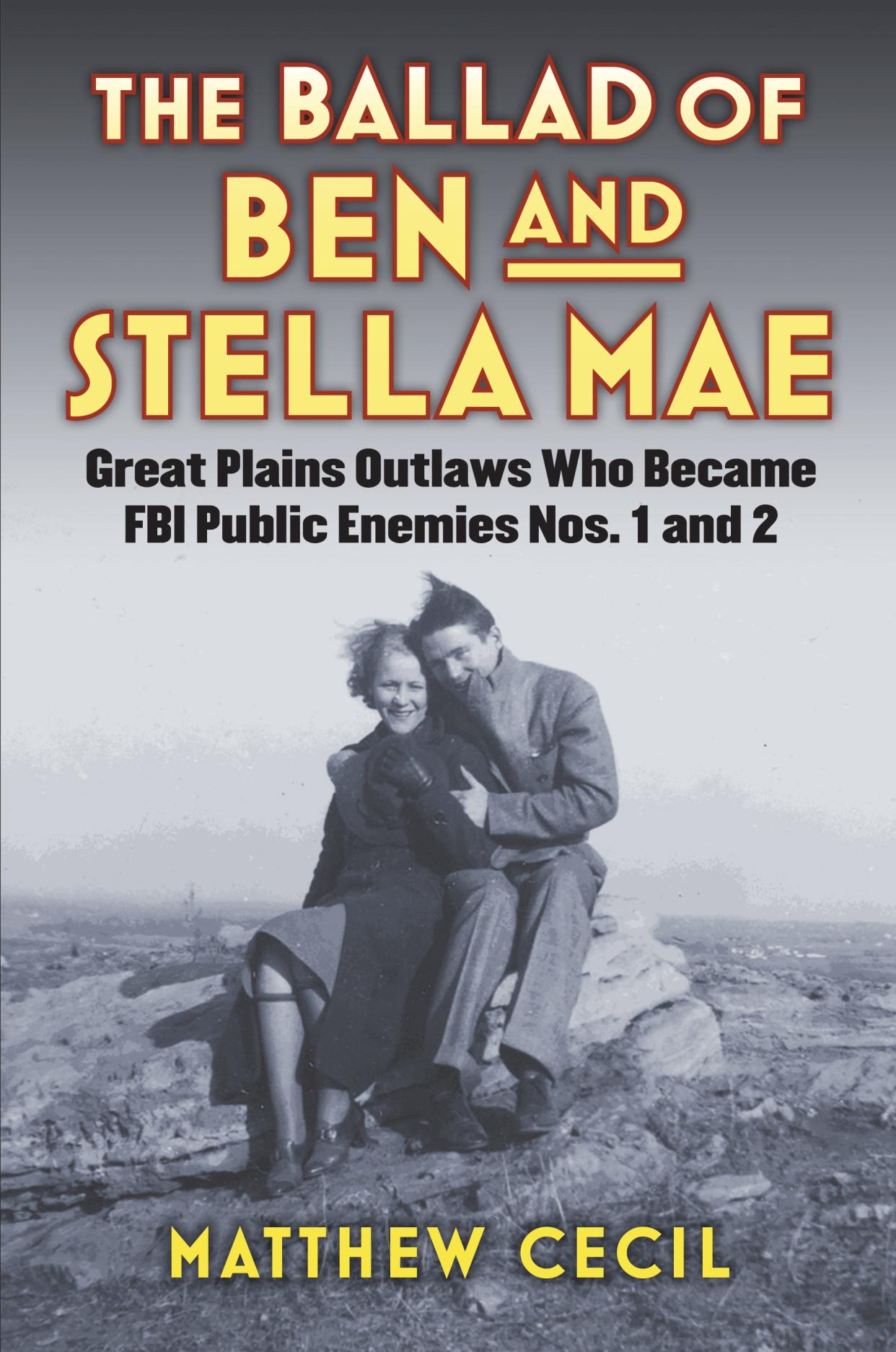Book Look: Young outlaws rob from eastern South Dakota banks, becoming FBI's most wanted

- Oops!Something went wrong.Please try again later.
South Dakota has a reputation for being a law-and-order state, at least concerning violent crimes.
Yet, in the 1930s, according to FBI Director J. Edgar Hoover, South Dakota had equal notoriety with Chicago, Los Angeles, New Orleans and Miami.
I wrote about the first of South Dakota's notorious criminals about six years ago, detailed in Timothy W. Bjorkman's outstanding true crime biography of Verne Sankey titled "Verne Sankey, America's First Public Enemy."
I had written, "I was born in Brule County, South Dakota, and grew up on a farm south of Kimball, which is in Brule County. My father, a student of local history, would often tell the story of a local man (local being defined differently because of the scarcity of population) who became the FBI's first Public Enemy. He lived about 14 miles northwest of Kimball, about 11 miles southwest of the smaller town of Gann Valley, current population 14, which is also the county seat of Buffalo County.
Northwest of Kimball on an old turkey ranch between 1931 and 1934, the Verne Sankey family lived, which included Verne, his wife Fern, their son, Orville, and a daughter Echo. Verne was often gone, especially to Canada, Minneapolis and Denver. I still remember snatches of conversation among farmers who would debate whether Sankey was a dangerous crook or someone the FBI framed to take the hit for unsolved crimes."

Rest assured, Verne Sankey was a first-class criminal who deserved young J. Edgar Hoover's label. Many robberies, murders and kidnappings are hard crimes to overlook. Ben and Stella Mae's crimes are nowhere in the league of Sankey's. Their two crimes would not make a top 10 list in the Midwest in most years.
In 1938, Ben Dickson, 25 years old, and his 14-year-old wife, Stella Mae, robbed the Corn Exchange Bank in Elkton of $2,187.64.
They robbed the Northwest Security Bank in Brookings two months later for a much more successful sum of $17,593. That was after waiting two hours for the vault's time-lock to open while the bank's manager went on processing loans for customers.
Ben and Stella Mae are not more recognizable names in South Dakota because their home was in Topeka, Kan. Their families owned lake property for summer vacations near Lake Benton, Minn.
Ben planned to rob South Dakota banks near the Minnesota border, escape to Minnesota, then return to Kansas when the FBI became stymied. And Hoover and the FBI did become stymied, which led them to designate Ben as public enemy No. 1 in the United States and Stella Mae, now just 16 years old, as public enemy No. 2.
That put these two young people in league with Al Capone, Matt Dillinger, Machine Gun Kelly, Bonnie and Clyde and Verne Sankey.
The author of "The Ballad of Ben and Stella Mae" is Matthew Cecil, a South Dakota author who had difficulty finding enough information to make a book out of this story. Fortunately, the FBI had kept its files intact, and he was able to access all of the FBI files under the Freedom of Information Act.
Why did two small-time criminals like Ben and Stella Mae crank up the FBI's ire to such a degree? Cecil has a probable explanation now that we know much more about Hoover.
"Unfortunately for Ben and Stella Mae Dickson, they came along at a time when Hoover's FBI was perfecting its public relations machinery and honing its facile message of good versus evil. It was also a time when newspaper reporters and editors routinely restated and even embellished the characterizations of the bureau's designated public enemies, as provided by Hoover's publicists.
Ben and Stella Mae emerged from Topeka, Kan., as small-time outlaws when Hoover and his publicists needed public enemies to act as easily defeated foils in the bureau's self-promotion campaigns. Dillinger and other famed bandits were long gone by 1919, but the media's appetite for bureau adventures had to be sated."
I am not going to spoil the story of what happened to Ben and Stella Mae, nor how bank robbery emerged as a crime of choice, because I want the readers of this column to read the book.
There is a lesson for all of us to learn. If we start accusing young people of deeds they did not commit, we encourage them to do wrong. For in their mind, they will be blamed for the wrong anyway.
Next month, I will review Emily St. John Mandel's new novel, "The Sea of Tranquility." It is being hailed as a crossover between a fantasy and a mystery.
"The Ballad of Ben and Stella Mae" by Matthew Cecil, University of Kansas Press, 2016, 191 pages. Because it is out of print, it sells for between $25-$35.
Donus Roberts is a former teacher, current advisor to the ABC Book Club, an avid reader/collector of books and owner of ddrbooks in Watertown. He encourages readers to connect with him at ddrbooks@wat.midco.net.
This article originally appeared on Watertown Public Opinion: Young outlaws rob eastern South Dakota banks becoming FBI most wanted

